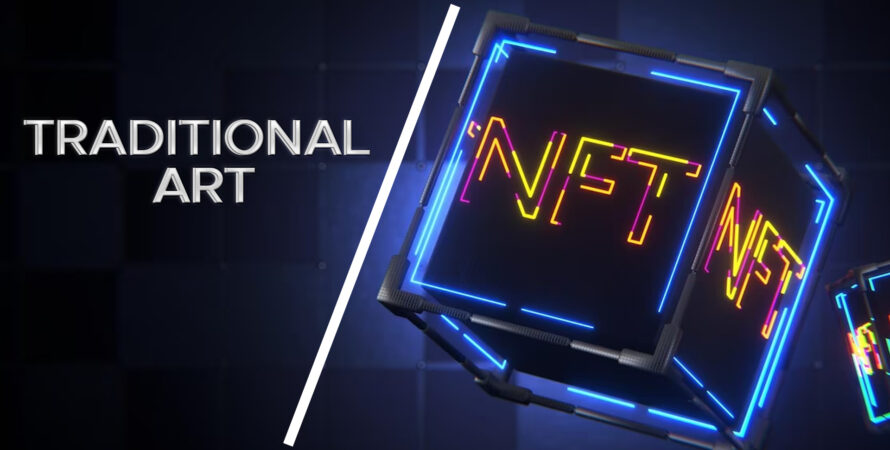- NFTs have made it possible for large chunks of the audience to own legitimate and exquisite art pieces.
- Traditional art continues to reflect the rich history of humans while simultaneously connecting everyone to their cultural heritage.
NFTs or Non-Fungible Tokens, are a type of proof of authentication of a unique piece of digital art or content using blockchain technology. Cryptocurrencies like Bitcoin and Ethereum can be exchanged on a 1-to-1 basis and are fungible, on the other hand, each NFT has its distinct characteristics, is unique in its manner and cannot be exchanged on a 1-to-1 basis.
In today’s time, NFTs have gained traction in the fields of art, collectibles, and other creative industries. This also allows content creators to sell their work directly to buyers without needing any intermediaries.
Traditional art refers to artistic techniques that have been passed down through generations and have cultural significance. It involves various forms of art, such as visual art, paintings, ceramics, drawings, sketches, sculptures, etc.
Comparing the Value and Ownership
Traditional arts such as paintings, sculptures, sketches, and more have captured the attention of the majority of people through their rich heritage and cultural significance. For centuries, rare and collectible art pieces have been highly regarded in terms of cultural and monetary value.
They have even been regarded as investment options. Their physical presence made them more desirable, as they could be owned, stored, and physically felt. People collected them for their collections and to display at museums and galleries.
However, with technological advancements, newer forms of art have surfaced, challenging the notions attached to traditional artwork. One such technological advancement is the rise of Non-Fungible Tokens or NFTs. These are blockchain-powered artworks designed to facilitate the creation and sale of digital assets.
Traditional artworks have always been viewed as physical stores of value. However, NFTs offer a new way for creators to monetize their work and establish ownership by leveraging blockchain technology. This has triggered a discussion in the world of art about the legitimacy and value of these digital artworks.
Moreover, questions about the way blockchain works have also been raised about the ecological impact of energy-intensive blockchain networks that are used to expedite NFT transactions.
The Impact of NFTs on Traditional Art
NFTs have taken the world of art by storm, disrupting centuries-long traditional notions of value and ownership. With this new-age technology, art is not just limited to the physical world. Now, it can be digitized and sold as unique and separate entities, giving way to profound sources of income for artists.
The new digital art is all the buzz right now, with traditional art enthusiasts questioning the value and legitimacy of the artwork. Certainly, NFTs are not just a vogue; they mirror a fundamental shift in the way everyone perceives art and ownership.
Nonetheless, NFTs have opened doors to new possibilities and given way to new business opportunities for artists, investors, and collectors.
Conclusion
On the whole, it can be said that the comparison between traditional art and NFT art is not about which is better, but about accepting the changing scenario in the world of art and recognizing the value of this change.
In this digital age, NFTs have made it easier for the majority of the audience to own an art piece, whereas the role of traditional art remains unwavering as it continues to be a significant reminder of our rich cultural history and acts as a bridge connecting rich history and modern tomorrow.




